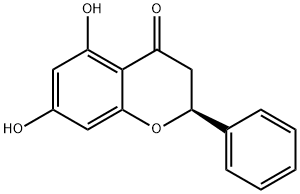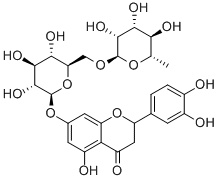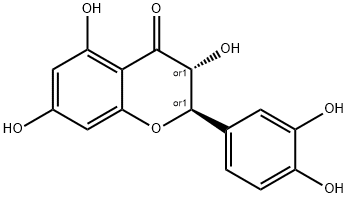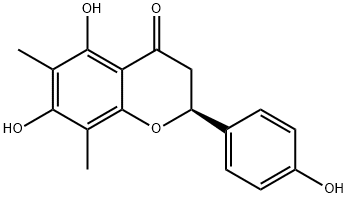PRODUCT Properties
| Melting point: | 202 °C |
| Boiling point: | 511.1±50.0 °C(Predicted) |
| Density | 1.386±0.06 g/cm3(Predicted) |
| storage temp. | under inert gas (nitrogen or Argon) at 2-8°C |
| solubility | Soluble in ethanol and methan |
| form | powder |
| pka | 7.50±0.40(Predicted) |
| color | White |
| LogP | 3.225 (est) |
| EPA Substance Registry System | 4H-1-Benzopyran-4-one, 2,3-dihydro-5,7-dihydroxy-2-phenyl-, (2S)- (480-39-7) |
Description and Uses
Pinocembrin is a flavonoid that has been found in Eucalyptus, and has diverse biological activities. It induces apoptosis in, and inhibits the migration of, SKOV3 ovarian cancer cells when used at a concentration of 200 μM. Pinocembrin (5 mg/kg) reduces lesion volume, as well as brain microglial activation and production of IL-1β, IL-6, and TNF-α in a mouse model of collagenase-induced intracerebral hemorrhage (ICH). It prevents increases in plasma and kidney malondialdehyde (MDA) levels, glomeruli lobulation, mesangial expansion, and tubule vacuolization and occlusion, and it decreases hepatic cholesterol, triglyceride, and LDL levels in a rat model of diabetic nephropathy. Pinocembrin (20 and 50 mg/kg) reduces pulmonary edema, as well as neutrophil, lymphocyte, and macrophage infiltration in a mouse model of LPS-induced lung injury.
Pinocembrin is a flavanoid with antioxidant activity found in damiana, honey, and propolis. Recent studies show that Pinocembrin maybe be a therapeutic option in reducing cerebral ischemia/reperfusion injury as a result of its anti-oxidative and anti-apoptotic effects. Pinocembrin displayed neuroprotective effects in glutamate injury model partly by inhibiting p53 expression causing a lower Bax-Bcl-2 ratio and by inhibiting the release of cytochrome c.
Safety
| Symbol(GHS) |  GHS07 |
| Signal word | Warning |
| Hazard statements | H302-H315-H319-H335 |
| Precautionary statements | P261-P305+P351+P338 |
| Safety Statements | 24/25 |
| HS Code | 29329990 |




